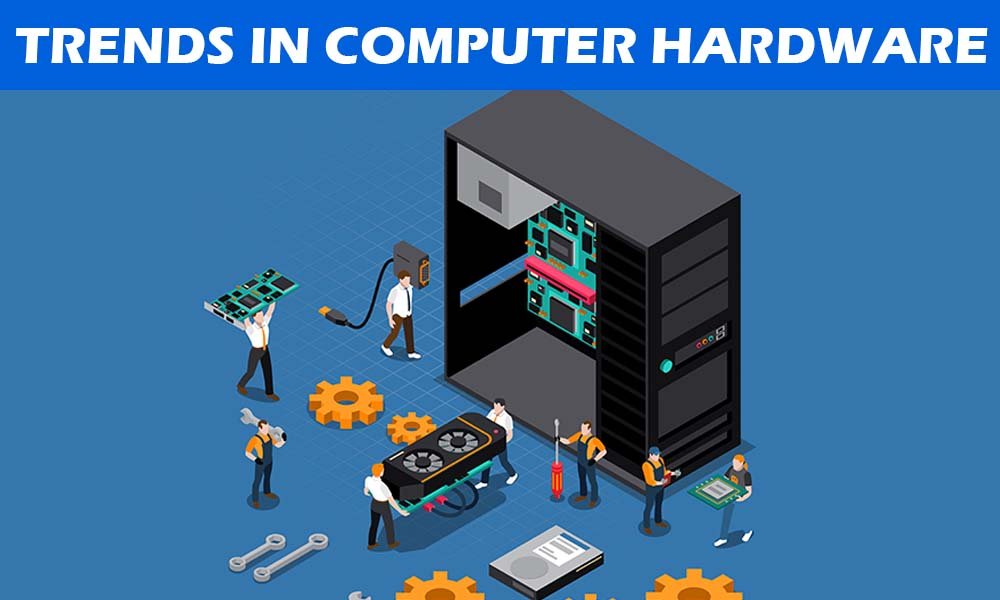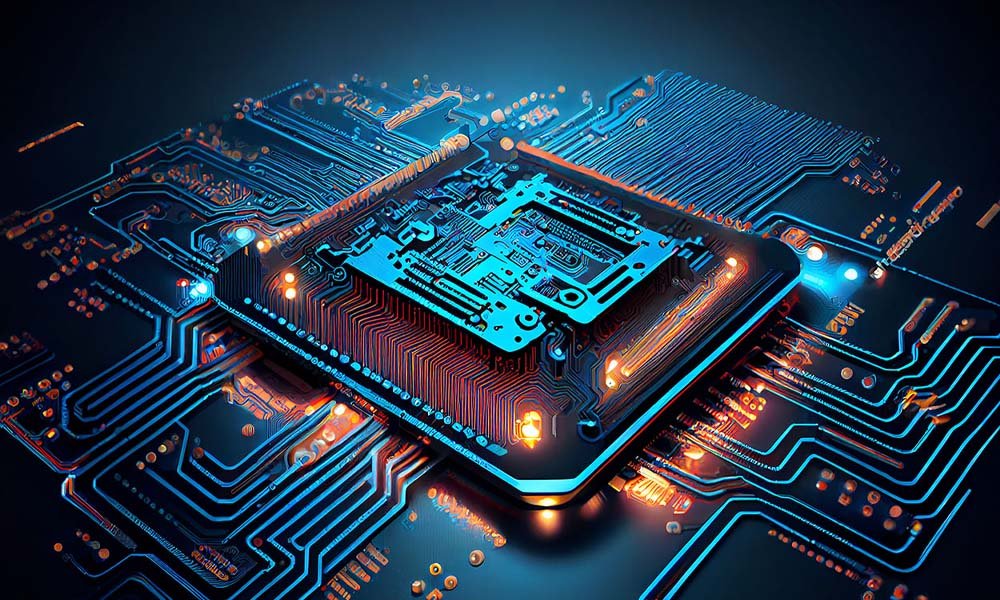Exploring the Latest Trends in Computer Hardware Leave a comment

Significant breakthroughs are still being made in the central processor unit (CPU), which is the brains of every computing device. Manufacturers are pushing the limits of multi-core processing, speed, and energy efficiency. Tasks related to machine learning and artificial intelligence are being improved by processors that have AI accelerators built in.
One of the main drivers of advancements in computer hardware is the competition for faster and more efficient CPUs. The CPUs of today are far more powerful than those of the past, with clock speeds setting new records and core counts rising. Users may now enjoy quicker and more responsive computer experiences thanks to manufacturers like AMD, Intel, and others who are always pushing the boundaries of what is possible.

The incorporation of AI accelerators into CPUs is very intriguing. These specialized hardware parts offer a notable performance increase since they are built to tackle tasks related to machine learning and artificial intelligence. These accelerators are increasing the effectiveness and accessibility of AI jobs, whether they are for real-time language translation, picture recognition, or even game AI.
In addition to improving performance, the incorporation of AI technology into CPUs creates new opportunities for applications in a variety of sectors, including healthcare, finance, entertainment, and autonomous cars.
2. The field of quantum computing
Although still in its early stages, one of the most revolutionary developments in computer hardware is quantum computing. Compared to traditional computers, quantum computers have the ability to tackle complicated problems tenfold quicker. As science develops, advances in medicine development, optimization issues, and cryptography could occur.
In terms of computer hardware, quantum computing is a quantum jump. Quantum computers, as opposed to conventional computers, employ quantum bits, or qubits, which are multistate entities capable of processing data in various ways. Due to this characteristic, quantum computers are able to carry out some computations at rates that traditional computers could never match.

The possibilities for using quantum computing are endless. Post-quantum cryptography is necessary because quantum computers have the potential to decipher existing encryption techniques. Conversely, ultra-secure communication is promised by quantum cryptography, which is based on the ideas of quantum physics.
The enormous processing capacity of quantum computers may replicate intricate chemical interactions and expedite the creation of novel medications, which is another area in which they show promise. Additionally, optimization tasks, like route optimization for logistics or financial portfolio management, promise to profit considerably from quantum computing.
While commercially viable quantum computers are still some ways off, firms and academics are making incredible strides, and there is no denying the technology’s potential to have a significant influence on a wide range of industries.
3. Acceleration of AI Hardware:
AI is increasingly being used in many different applications, such as speech recognition and driverless cars. AI workloads are becoming more accessible and efficient because to hardware acceleration, such as GPUs and TPUs, which allows real-time AI processing on a variety of devices.
The way we engage with technology is being revolutionized by the incorporation of AI hardware acceleration into computer hardware. TPUs and GPUs are two well-known examples of specialized hardware intended to speed up machine learning and artificial intelligence (AI) applications.

Because of their capacity for parallel processing, GPUs—which were first created for the purpose of producing visuals in video games—are now often utilized for AI calculations. They can handle intricate neural network operations, which greatly accelerates the training of AI models and deep learning.
Conversely, TPUs are proprietary AI accelerators created by Google. These chips are utilized in Google’s data centers to increase the productivity of AI workloads. They are tuned for TensorFlow, a well-known machine learning framework. Real-time AI processing is now feasible on a variety of devices, including smartphones and Internet of Things (IoT) gadgets, thanks to TPUs’ remarkable performance and energy efficiency.
High-end workstations and servers are not the only devices that can include AI hardware acceleration. With voice assistants and picture recognition apps among other AI-driven experiences, it’s becoming more and more prevalent in ordinary gadgets.
4. Quicker and More Capable Storage:
There is an unwavering need for bigger and quicker storage solutions. While NVMe drives provide extremely rapid data transfer rates, SSDs (Solid-State Drives) are becoming more and more cheap. Furthermore, multi-terabyte hard drives are becoming commonplace, meeting the needs of customers with enormous data storage requirements.
Our growing reliance on digital technology is driving the need for quicker and more capacity storage. The need for storage space is unquenchable, ranging from large game installs and software libraries to high-resolution pictures and movies.

Solid-State Drives, or SSDs, are now the industry standard for computer equipment. Compared with conventional Hard Disk Drives (HDDs), they provide enhanced durability, energy economy, and speedier data access.
NVMe (Non-Volatile Memory Express) drives have become a major player in the SSD space. These drives provide blazing-fast data transfer speeds and connect straight to the CPU. Because of this, they are perfect for those who need fast data access, such as professionals, gamers, and content makers.
Conventional HDDs, on the other hand, are also changing. These days, multi-terabyte hard drives are commonplace, offering customers with sizable media collections and data archives plenty of storage capacity.
Users are able to balance speed and storage with the help of fast SSDs and large-capacity HDDs, guaranteeing that their digital material is safe and easily accessible.
Graphics hardware improvements are driven by the gaming industry. With lifelike visuals and more engrossing gameplay, graphics cards with ray tracing capability and improved real-time ray tracing technologies are revolutionizing gaming experiences.
For a considerable amount of time, computer hardware innovation has been led by graphics hardware. Graphics cards are becoming more potent and able to produce amazing pictures in games and apps as technology develops.

Real-time ray tracing is one of the biggest advances in recent years. Using a rendering approach, photorealistic visuals are produced by mimicking the behavior of light. Ray tracing-enabled games improve immersion and visual quality with amazing visual effects including reflections, shadows, and global lighting.
Modern graphics cards are outfitted with specialized circuitry for real-time ray tracing in order to fully utilize the capabilities of ray tracing. Notable examples are the RDNA2 architecture from AMD and the RTX series from NVIDIA. With the amazing ray tracing capabilities of these GPUs, players can enjoy the newest games in all their visual splendor.
In addition, gamers may now experience more responsive and fluid gaming thanks to the development of high-refresh-rate displays. Fast-paced games may be won by combining strong GPUs with high-refresh-rate displays.
Not just gamers gain from the continued advancements in graphics technology. Professionals working in areas such as animation, video editing, and 3D modeling also depend on high-performance graphics gear.
6. Portability and Miniaturization:

Compact computer devices like micro PCs and ultra-thin laptops are becoming more and more common as miniaturization trends continue.


